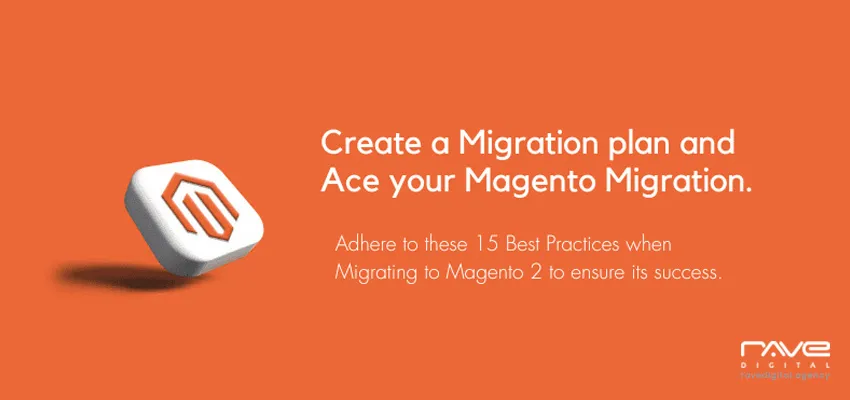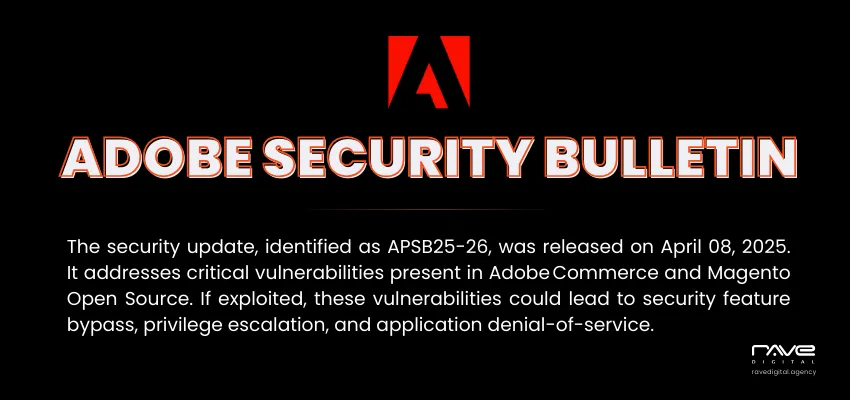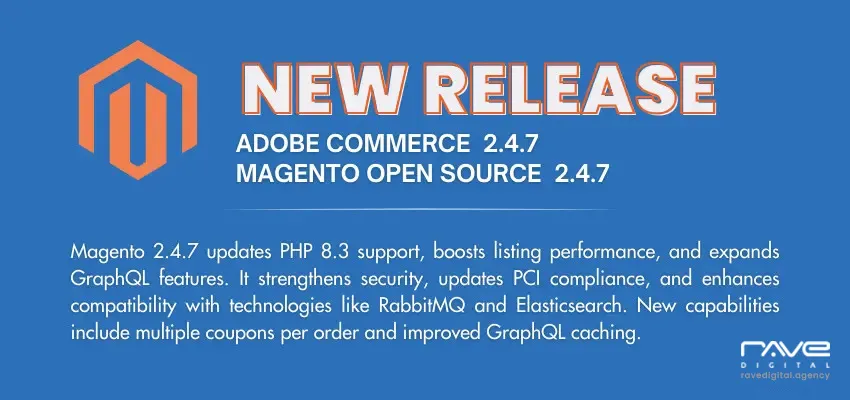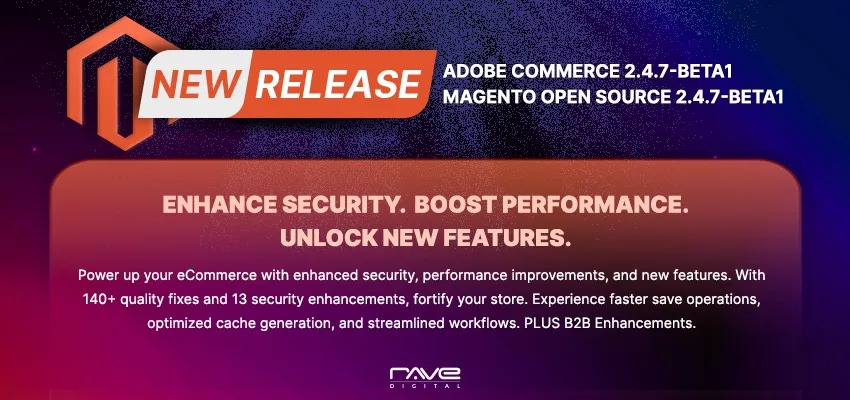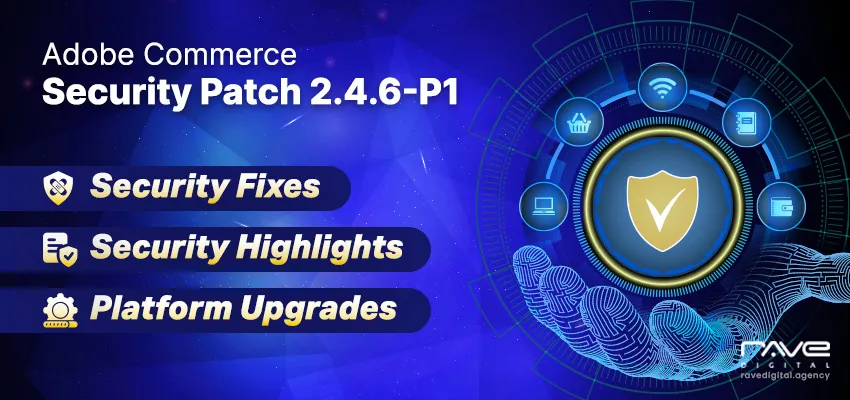Are you one of the many eCommerce merchants and B2B companies considering a Magento 1 to Magento 2 migration? If so, you’re in the right place. Magento 2 is the latest version of the popular eCommerce platform, and migrating to it is essential for businesses of all sizes.
However, the process of Magento 2 migration is no small feat and requires careful planning, the right people, and tools. Understanding the best practices for a successful Magento 1 to Magento 2 migration is essential. To help you out, we’ve compiled a list of the 15 best practices to adhere to when migrating to Magento 2.
What is Magento Migration?
Magento migration is the process merchants and B2B companies complete to transfer their existing Magento 1 store to the Magento 2 store. This migration process is often complex and daunting, but it is necessary to take advantage of the many new features and benefits that Magento 2 offers.
Why You Need to Migrate From Magento 1 to Magento 2
Magento 2 offers enhanced performance that helps it outperform Magento 1. While Magento 1 is still functional, migrating to Magento 2 will benefit you in numerous ways. Below are a few reasons for migration from Magento 1 to Magento 2.
Better User Experience and Security
The user experience of Magento 2 is much better than Magento 1. It offers a modern and responsive design and is optimized for mobile devices. Customers can easily find what they are looking for and check out quickly and securely.
Magento 2 offers more robust encryption and authentication methods and has built-in security patches and updates. Furthermore, it has integrated malware and virus protection, which can help protect your website from malicious attacks.
Extended Functionality
Magento 2 offers extended functionality for complex B2B scenarios. It enables B2B companies to manage complex pricing and payment options and customer accounts and quotes. It also offers improved checkout, order management, and enhanced customer segmentation.
Better Support
Magento 2 is supported by the developer, while Magento 1 is not. As such, you can get help from Magento experts if you have any issues to help you save time and money.
The 15 Best Practices to Follow When Migrating to Magento 2
Magento 2 migration is a necessary process for many eCommerce B2B businesses. You can successfully complete the process by following the proper guidelines and knowing what to expect from your migration to Magento 2. Here are the 15 best practices to adhere to when you migrate from Magento 1 to Magento 2.
1. Plan Ahead
Before you even begin a Magento 2 migration, it’s essential to have a plan prepared. This plan should include a timeline and detailed instructions for the entire process. If you’re working with an outside Magento development agency, ensure they understand your goals and the timeline they should follow.
Your migration plan should include elements including a product catalog, consumer data, and store configuration settings.
2. Assess Your Current Data
Before you begin the migration process, take the time to assess your current data. This process includes understanding what works, what doesn’t, and what needs to be improved. Doing this will help prevent any surprises during the transition.
3. Choose the Right Magento 2 Migration Service
Various Magento 2 migration services are available to help you navigate the transition process from Magento 1 to Magento 2. For instance, Rave Digital provides expert Magento 1 to Magento 2 migration services to help shift everything related to Magento 1 to Magento 2. Rave Digital’s migration services can help you with our team of certified Magento 2 experts throughout the entire migration process.
4. Create a Backup
Before you begin migrating from Magento 1 to Magento 2, create a backup of your Magento 1 database. A backup will allow you to restore your system quickly should anything go wrong during the migration.
5. Evaluate Your Current Server
Your Magento 1 server should be evaluated before the migration to ensure it can run Magento 2. If not, upgrading your server or finding a new one that can handle the additional requirements is vital.
6. Run Tests
Before you go live with your new Magento 2 site, run tests to ensure everything is working correctly. These tests include testing the site on different browsers and devices and running tests to ensure the migration was successful.
7. Manual Media Magento 2 Data Migration
During the Magento 2 data migration process, remember that media files must be manually transferred from Magento 1 to Magento 2. However, many Magento 1 models store media files in a database that automatically moves the media files to Magento 2 but will need to be synced before migration.
8. Know the Timeline
A successful Magento 2 migration might take longer than you’d expect, and patience is crucial to complete your migration. The time spent migrating from Magento 1 to Magento 2 depends on various factors, including the number of extensions and third-party extensions you have, your features, and your store’s design elements. When you begin the migration process, know that it might take between 6-10 months to complete.
9. Use Migration Tools
Magento 2 provides several migration tools to help make the process easier. Take the time to understand how to use these tools before you begin the migration process.
10. Test Your Site After Migration
Once the migration process is complete, it’s essential to test your site to ensure everything is working as expected. This test includes testing the front-end and back-end of the site.
11. Optimize Your Database
After the migration is complete, optimizing the database is crucial. This optimization will help ensure the best performance of your new Magento 2 site.
12. Monitor Performance
Once the migration is complete and your site is live, monitor the performance. Monitoring will help you make any necessary adjustments or improvements.
13. Document the Migration Process
Document every part of the migration process to help you or other developers quickly identify any problems or areas for improvement in the future.
14. Update Your Hosting Provider
Depending on which hosting provider you are using, you may need to upgrade your hosting plan to accommodate the additional requirements of Magento 2.
15. Create to Suit Different Platforms
Finally, ensure that your site is optimized for desktop, mobile, and tablet platforms to ensure that anyone can access a seamless experience. Migrating from Magento 1 to Magento 2 might involve a redesign to ensure compatibility with all platforms.
A Magento Upgrade Service You Can Trust
If you’re feeling overwhelmed by the process of Magento 2 migration, you may want to consider hiring a Magento specialist or an Adobe Commerce (Magento) Agency. An experienced agency will ensure that the process is done correctly and quickly upgrade Magento 1 to Magento 2.
Luckily, If you’re seeking Magento 2 upgrade services, you’ll find everything you need to complete the process with Rave Digital. Our Magento migration experts and the team of Magneto-certified developers can help you guarantee a successful and seamless migration and start enjoying the benefits of the latest version of the Magento platform.
The decision to hire Magento experts is nerve-wracking for many teams that are unfamiliar with the migration process. However, when you hire Magento specialist teams like the experts at Rave Digital, you can take advantage of the numerous features and benefits that Magento 2 offers. Contact the experts at Rave Digital to get started.
